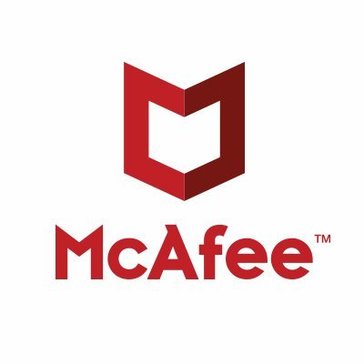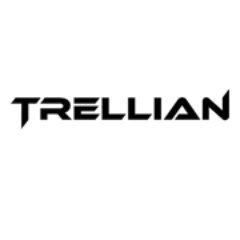4.25
McAfee DLP Discover Review
Explore our McAfee DLP Discover review, covering security features, pricing, support, and updates. Evaluate its value for money and see if it fits your needs!

Comprehensive overview and target audience
McAfee DLP Discover represents a significant element within the broader Data Loss Prevention suite offered by McAfee now part of Trellix. It is primarily engineered for organizations needing robust visibility into where their sensitive data resides across their complex IT environments. The target audience typically includes medium to large enterprises, particularly those in regulated industries like finance, healthcare, and government, which face stringent compliance requirements regarding data protection and privacy. These organizations need tools capable of scanning vast amounts of data stored across diverse locations including file servers, databases, cloud storage, and collaboration platforms.
The core strength lies in its comprehensive scanning and classification capabilities. Key McAfee DLP Discover security features involve deep content inspection techniques using methods like keyword matching, regular expressions, and advanced pattern recognition to accurately identify confidential information such as personally identifiable information PII, protected health information PHI, and intellectual property. It allows security teams to understand their data landscape, pinpoint potential risks associated with exposed sensitive data, and prioritize remediation efforts effectively. This proactive approach is fundamental to preventing data breaches and ensuring compliance.
Ongoing development ensures the platform remains relevant against evolving threats and data types. Regular McAfee DLP Discover updates and new features often include enhanced detection techniques, expanded coverage for new data repositories particularly in the cloud, and improved administrative workflows. These updates are crucial for maintaining protection efficacy and usability. Evaluating the McAfee DLP Discover value for money involves considering its extensive feature set, the potential cost savings from preventing data breaches, and its role in meeting regulatory mandates. While a direct McAfee DLP Discover pricing comparison with competitors requires detailed quotes based on specific organizational needs like user count or data volume, its enterprise focus suggests a pricing structure aligned with comprehensive security solutions rather than standalone tools.
To maximize the return on investment and ensure smooth operation, adequate user knowledge is essential. Prospective and current users benefit from the available McAfee DLP Discover support and training resources. These typically encompass documentation, knowledge base articles, online forums, and potentially formal training sessions offered directly or through partners. Accessing these resources helps administrators configure policies correctly, interpret scan results accurately, and manage the system efficiently, ultimately strengthening the organization’s overall data security posture. Effective utilization of support is key to addressing any technical challenges promptly.
User experience and functional capabilities
Delving into the user experience and functional capabilities of McAfee DLP Discover reveals a platform designed for comprehensive data visibility and control, though it often presents a notable learning curve. Gathering McAfee DLP Discover user experience insights frequently highlights the robustness of its features, counterbalanced by complexity in configuration and day to day management. The interface, while powerful, typically requires dedicated administrator training and familiarity to navigate effectively. Organizations should anticipate an initial investment in understanding the system’s intricacies to fully leverage its potential for discovering sensitive data across complex environments.
Functionally, the software excels at its core mission: scanning diverse data repositories. Learning how to use McAfee DLP Discover involves mastering its policy creation engine, configuring scan jobs for different data stores like file servers, databases, and cloud applications, and interpreting the subsequent results. Its ability to use predefined dictionaries, regular expressions, and custom criteria for data classification is a key strength, allowing granular identification of PII, PHI, intellectual property, and other sensitive information types. Reporting features provide visibility into where data resides, enabling security teams to understand their risk exposure accurately.
The implementation process itself requires careful planning. While a McAfee DLP Discover implementation guide provides structure, deploying the solution effectively often necessitates technical expertise and a clear understanding of organizational data flows and security objectives. Common problems with McAfee DLP Discover can arise during this phase, including initial configuration challenges, performance tuning to minimize impact on production systems during scans, and achieving the desired accuracy in data classification. Overcoming these hurdles is crucial for a successful deployment and realizing the intended security benefits.
Further examination of common problems with McAfee DLP Discover often points towards the potential for generating false positives if policies are not meticulously tuned. Managing scan schedules and resource consumption also requires ongoing attention to avoid impacting network or system performance. Integrating McAfee DLP Discover with other tools within the security ecosystem, such as SIEM platforms or incident response solutions, is essential for contextualizing discovery findings and streamlining remediation workflows. This integration capability enhances the overall value proposition by fitting Discover into a broader security strategy rather than operating in isolation.
Staying current is vital, and McAfee DLP Discover updates and new features are periodically released to address emerging threats, support new data repositories particularly in cloud environments, and improve usability. These updates are critical for maintaining effectiveness. Best practices for maximizing the utility of McAfee DLP Discover include regularly reviewing and refining classification policies, conducting targeted scans based on risk assessments rather than overly broad approaches, investing in administrator training, and actively utilizing the support resources available. Adhering to these best practices helps mitigate challenges and ensures the tool delivers consistent value in protecting sensitive organizational data.
Who should be using McAfee DLP Discover
McAfee DLP Discover is primarily designed for medium to large enterprises that manage significant volumes of sensitive data across complex IT infrastructures. Organizations operating within highly regulated sectors such as finance, healthcare, government, and technology find it particularly valuable. These industries face stringent compliance mandates like GDPR, HIPAA, and PCI DSS, requiring meticulous tracking and protection of personally identifiable information PII, protected health information PHI, financial records, and intellectual property. If your organization struggles with visibility into where its critical data resides across diverse repositories including file servers, databases, endpoints, and cloud storage, then McAfee DLP Discover addresses this fundamental security challenge directly.
The tool serves organizations needing to proactively identify and classify sensitive information before it can be accidentally exposed or maliciously exfiltrated. A typical McAfee DLP Discover use case scenario involves scanning network file shares for unsecured documents containing customer PII or searching cloud applications for confidential intellectual property that violates data residency policies. It helps security teams understand their data footprint, assess risk exposure associated with legacy data or shadow IT, and prioritize remediation efforts effectively. Organizations undergoing mergers, acquisitions, or significant IT restructuring also benefit immensely by using Discover to map data assets and ensure consistent policy enforcement across the newly integrated environment.
Within these organizations, several key roles interact with McAfee DLP Discover. These typically include:
- Security administrators responsible for configuring scan policies, managing discovery tasks, and interpreting results.
- Compliance officers who rely on its reporting capabilities to demonstrate adherence to regulatory requirements and internal data governance policies.
- IT teams who manage the infrastructure where data resides and may assist with deployment and performance tuning.
- Data privacy teams focused on ensuring appropriate handling and minimization of sensitive information.
Successfully leveraging the platform requires not only technical proficiency but also adherence to established guidelines. Following the Best practices for McAfee DLP Discover, such as regular policy refinement, targeted scanning based on risk, and continuous administrator training, is essential for maximizing its effectiveness and minimizing potential issues like false positives or performance impacts. Ultimately, any organization serious about comprehensive data visibility and proactive risk mitigation should consider McAfee DLP Discover.
Unique Features offered by McAfee DLP Discover
McAfee DLP Discover provides extensive customization options enabling organizations to tailor data discovery precisely to their unique environments and security requirements. Administrators possess granular control to define highly specific policies. This is achieved using a combination of predefined dictionaries for common data types, powerful regular expressions for complex patterns, specific keyword lists relevant to the business, and advanced pattern matching techniques like fingerprinting. This allows for meticulous control over identifying sensitive data whether it is PII, PHI, financial records, source code, or proprietary intellectual property. Fine tuning these classification policies is essential to maximize detection accuracy and significantly minimize disruptive false positives, ensuring security teams focus efforts on genuine data risks.
Unique features prominently include its capability to scan a truly vast array of data repositories, a critical factor in today’s distributed IT world. This coverage spans traditional network file shares and complex databases but extends significantly into various cloud storage platforms like Box or Microsoft 365 and essential collaboration tools. Its deep content inspection capabilities allow it to look inside hundreds of file types and data streams effectively. Customizing McAfee DLP Discover for business growth involves leveraging these adaptable features. As data volumes inevitably increase or new regulations demand tracking different data types, the platform’s customizable rules engine can be readily adjusted. This ensures maintained comprehensive visibility and protection, supporting scalable security strategies aligned with expansion.
While the platform’s robustness clearly benefits large enterprises, its suitability regarding McAfee DLP Discover for small businesses warrants careful consideration and is not its primary design target. The inherent complexity in initial configuration, ongoing policy management, and the system resource requirements typically align better with organizations possessing dedicated security teams and sufficient budgets. Smaller entities might find the operational overhead challenging unless facing specific, high stakes compliance mandates or unusually high data risk scenarios. A crucial aspect enhancing its value proposition, particularly for larger deployments, involves Integrating McAfee DLP Discover with other tools. Feeding discovery findings into SIEM platforms for centralized logging and correlation or into incident response systems for automated workflow ticketing significantly improves operational efficiency and security context, creating a stronger, more cohesive security posture across the organization.
Pain points that McAfee DLP Discover will help you solve
Organizations today face numerous challenges in protecting sensitive data across increasingly complex IT environments. McAfee DLP Discover is specifically designed to address several critical pain points that hinder effective data security and compliance efforts. If your organization struggles with any of the following issues, this solution offers targeted relief.
Key challenges addressed include:
- Lack of Visibility: Many businesses simply do not know where all their sensitive data resides. Data sprawl across file servers, databases, endpoints, and cloud services creates blind spots, increasing the risk of accidental exposure or targeted attacks. McAfee DLP Discover systematically scans these diverse repositories, providing a comprehensive map of your critical information assets.
- Compliance Failures: Meeting stringent regulatory requirements like GDPR, HIPAA, or PCI DSS is a major burden. Failure often stems from an inability to locate and classify regulated data accurately. DLP Discover automates this identification process, generating reports essential for demonstrating compliance and avoiding significant penalties.
- Data Breach Risks: Unprotected sensitive data is a prime target for theft or leakage. Identifying exposed PII, intellectual property, or financial information proactively allows security teams to apply appropriate controls before a breach occurs, safeguarding reputation and financial stability.
- Managing Data Growth and Complexity: As businesses evolve, so does their data landscape. Customizing McAfee DLP Discover for business growth ensures that security policies adapt to new data types, storage locations, and regulatory demands, maintaining protection efficacy over time.
- Operational Inefficiencies: Manually searching for sensitive data is impractical and error prone. Integrating McAfee DLP Discover with other tools like SIEM or incident response platforms streamlines workflows, enabling faster remediation and correlating discovery findings with broader security events for better context.
While considering McAfee DLP Discover for different businesses sizes shows it is primarily geared towards medium to large enterprises due to its complexity and resource needs, the fundamental pain points it solves regarding data visibility and risk reduction are universal. Organizations must accurately assess if their scale and risk profile justify the investment in such a comprehensive discovery tool.
Scalability for business growth
As your organization expands operations introduces new product lines or enters new markets business growth inevitably leads to an exponential increase in data volume and complexity. Maintaining robust data security visibility during this expansion is paramount. McAfee DLP Discover is engineered with scalability at its core designed to accommodate the evolving needs of a growing enterprise without compromising protection efficacy. Its architecture inherently supports the increased demands placed upon it as data repositories multiply and diversify across on premises systems cloud environments and collaboration platforms ensuring consistent performance.
The platform’s ability to handle larger scale scanning operations is crucial for expanding businesses. Organizations can deploy additional scanning components or optimize existing configurations to manage significantly increased workloads ensuring discovery processes keep pace with rapid data creation and accumulation. This architectural flexibility prevents bottlenecks and maintains timely visibility into sensitive information even as the IT infrastructure grows dramatically larger and more distributed. Furthermore this scalability extends beyond just handling more data volume. Customizing McAfee DLP Discover for business growth involves adapting its sophisticated policy engine to new challenges. As business priorities shift new regulations take effect or different types of sensitive data become critical policies can be precisely refined ensuring discovery remains relevant accurate and targeted to the evolving risk landscape.
This inherent adaptability is key to supporting sustained expansion securely. It ensures that your foundational data protection strategy does not become outdated or insufficient as the business scales its operations globally or digitally. Proactive and comprehensive identification of sensitive information across an ever expanding digital footprint is essential for mitigating the heightened risks associated with potential data breaches regulatory non compliance and operational disruption during growth phases. Making Customizing McAfee DLP Discover for business scalability a practical reality means security teams can confidently manage evolving data risks throughout the entire business lifecycle supporting compliant and resilient growth. The solution provides a reliable foundation for a long term data security posture that evolves seamlessly alongside your organization’s ambitions.
Final Verdict about McAfee DLP Discover
McAfee DLP Discover stands as a robust and highly capable solution dedicated to solving the pervasive challenge of locating sensitive data within complex organizational environments. Its primary strength lies in its comprehensive scanning abilities, reaching across network shares, databases, endpoints, and crucial cloud services. This deep visibility is fundamental for enterprises striving to gain control over their data footprint, mitigate the significant risks associated with potential breaches, and systematically address compliance mandates. The platform directly tackles the critical pain points of unknown data locations and the difficulties in meeting stringent regulations like GDPR or HIPAA.
However, this power comes with notable considerations:
* Complexity: The platform requires significant technical expertise for effective configuration, policy tuning, and ongoing management. A steep learning curve is expected.
* Resource Intensive: Proper operation demands dedicated administrative resources and potentially impacts system performance if not carefully managed.
* Target Audience Focus: It is undeniably geared towards medium to large enterprises with mature security programs and the capacity to invest in its deployment and upkeep. Small businesses might find it overly complex.
* Strengths: Despite the challenges, its granular policy customization, broad repository support, and detailed classification capabilities are top tier for proactive data identification.
* Scalability: The architecture is designed to grow alongside an organization, accommodating increasing data volumes and evolving security requirements effectively.
Our **Final verdict on McAfee DLP Discover** is that it is an exceptionally powerful tool for its intended audience. For large organizations facing stringent compliance requirements and complex data landscapes, the investment in expertise and resources can be well justified by the unparalleled visibility and control gained. It excels at proactively identifying and classifying sensitive information before it becomes a liability. While not a solution for every business due to its complexity, for those needing enterprise grade data discovery, McAfee DLP Discover remains a formidable and valuable asset in the data security arsenal.
Advantage
Disadvantage
Comprehensive data discovery across diverse locations
Granular policy control prevents sensitive data loss
Centralized console simplifies management and reporting
Integrates seamlessly with McAfee ecosystem products
Helps achieve and maintain regulatory compliance
Disadvantage
Initial setup can be complex and time-consuming
Requires significant server and endpoint resources
Fine-tuning needed to reduce false positive alerts
Higher cost compared to some competitors
Support response times may vary significantly
Rating
McAfee Data Loss Prevention Endpoint
USD93.99 per Year
Web Based
Windows
Mac OS
Linux
Android
iOS
Phone Support
Email/Help Desk
AI Chat Bot
Live Support
24/7 Support
Forum & Community
Knowledge Base
Live Online
Documentation
Videos
In Person
Webinars
Implementation
Web Based
Windows
Mac OS
Linux
Android
iOS
Support
Phone Support
Email/Help Desk
AI Chat Bot
Live Support
24/7 Support
Forum & Community
Knowledge Base
Training
Live Online
Documentation
Videos
In Person
Webinars
Group text
Alternative Products
Frequently Asked Questions
What is McAfee DLP Discover?
McAfee DLP Discover is a component of the McAfee Data Loss Prevention suite specifically designed to locate sensitive data at rest across your organization’s digital landscape, providing visibility into where confidential information resides.
How can McAfee DLP Discover help me?
It helps you understand your data risk exposure by identifying and classifying sensitive information stored on endpoints, servers, databases, and cloud repositories, enabling you to enforce security policies, meet compliance requirements (like GDPR, HIPAA, PCI DSS), and take remediation actions to protect vulnerable data.
What types of sensitive data can it find?
It can find a wide range of sensitive data types, including Personally Identifiable Information (PII) like social security numbers and addresses, Protected Health Information (PHI), financial data like credit card numbers (PCI), intellectual property (IP) such as source code or design documents, and other confidential corporate information, using predefined dictionaries, regular expressions, keywords, and advanced techniques like exact data matching (EDM) and indexed document matching (IDM).
Where does McAfee DLP Discover scan for data (endpoints, cloud, storage)?
McAfee DLP Discover scans data primarily where it is stored (at rest), including endpoints (laptops, desktops), network file servers (NAS, SAN), databases, and increasingly, cloud storage repositories like Microsoft 365 (SharePoint Online, OneDrive), Box, and others, though cloud scanning capabilities may require specific configurations or modules.
What are the standout features of McAfee DLP Discover?
Standout features include its comprehensive scanning reach across endpoints, storage, and cloud; powerful data classification capabilities using multiple techniques (regex, keywords, fingerprinting, EDM, IDM); integration with the McAfee ePolicy Orchestrator (ePO) platform for centralized management and policy enforcement; automated classification tagging; and reporting features that provide insights into data location and risk.
How complex is the deployment and management?
Deployment and management are generally considered moderately complex to complex, requiring careful planning, policy definition, infrastructure setup (potentially including dedicated servers and agents), and ongoing tuning to minimize false positives and ensure accurate discovery; it typically necessitates dedicated IT security resources with expertise in DLP concepts and the McAfee ecosystem.
Are there any significant limitations to consider?
Significant limitations can include the complexity and resource requirements for effective deployment and management, the potential performance impact on scanned systems (especially during initial full scans), the need for meticulous policy tuning to balance detection accuracy with false positives, licensing costs, and the fact that its primary focus is *discovery* – remediation actions often rely on integration with other McAfee DLP components or manual intervention.
Is McAfee DLP Discover worth it?
Whether McAfee DLP Discover is worth it depends heavily on your organization’s specific needs, regulatory requirements, data sensitivity, and existing infrastructure; for large enterprises or those in highly regulated industries needing robust data-at-rest visibility and already invested in the McAfee ecosystem, it can be a valuable tool, but smaller organizations or those with simpler needs might find the complexity and cost prohibitive compared to lighter-weight or integrated platform solutions.




